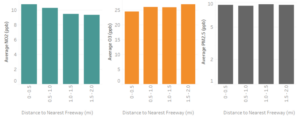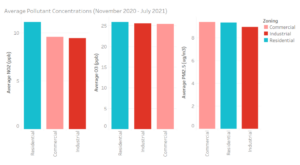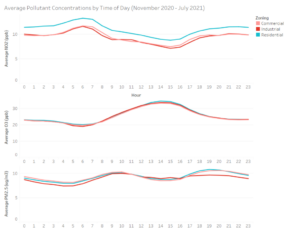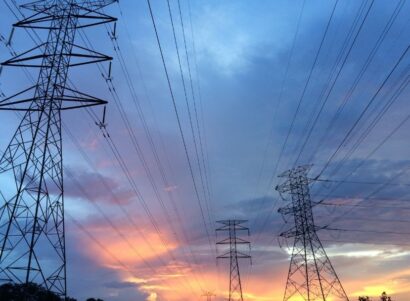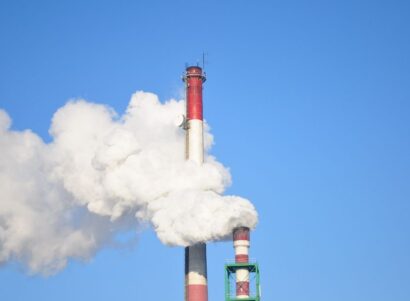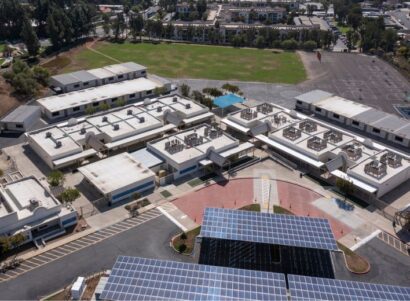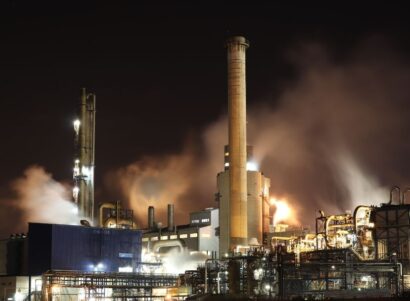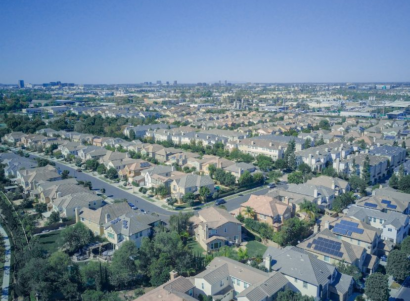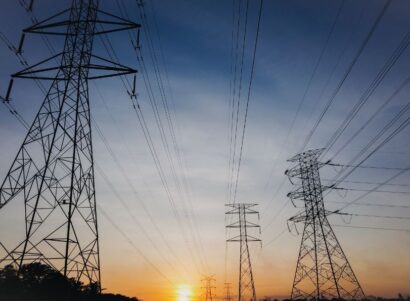Preliminary data – July 14, 2021
PSE, in collaboration with the Asian Pacific Environmental Network (APEN), first began collecting air quality data in Richmond and San Pablo in January 2020, with air monitoring efforts planned to continue through Spring 2022. Currently, the Richmond Air Monitoring Network consists of 52 stationary Aeroqual AQY air quality monitors deployed and collecting air quality data in one-minute intervals. 50 monitors are measuring particulate matter (PM2.5), nitrogen dioxide (NO2), ozone (O3), temperature, relative humidity, and dew point. Two prototype monitors are measuring PM2.5, volatile organic compounds (VOC), carbon monoxide (CO), temperature, relative humidity, and dew point.
Data presented below are preliminary and subject to change.
Various analyses of the spatial and temporal air pollutant trends in Richmond, North Richmond and San Pablo are currently underway. The data shown below exclude the 2020 Wildfire Season as we are currently in the process of developing a robust wildfire-season calibration for the PM2.5 data. Including the 2020 Wildfire Season data will likely result in substantially higher average PM2.5 concentrations across the study area.
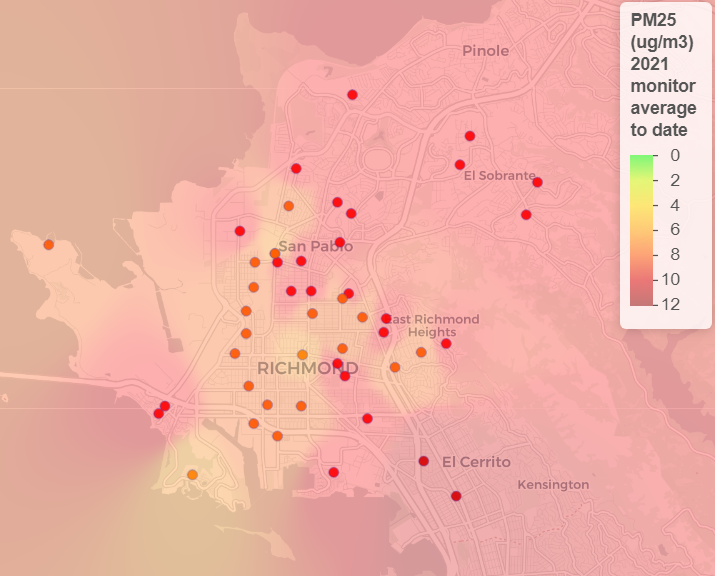
Additionally, a breakdown of air pollutant concentrations by time of day reveals general daily trends for the three different air pollutants and land use areas. For example, NO2 concentrations spike in the early morning, while ozone, a secondary pollutant, peaks a few hours later in the afternoon.
Preliminary analyses reveal some location-based variability in pollutant concentrations. The map below shows 2021 monitor averages of PM2.5 (using data collected from January 1, 2021 – July 12, 2021). Some areas display slightly higher concentrations than other parts of the network — for example, North Richmond and Point Richmond stand out from their surroundings. More analyses to determine the extent and cause of varying pollution concentrations in different parts of the Richmond-San Pablo area are currently underway.
As an example, we have looked into the role of traffic and the morning commute. Average air pollutant concentrations shown below reflect data collected from November 2020 to July 2021. Air monitors in our network located closer to freeways generally report slightly higher average nitrogen dioxide concentrations (NO2; shown in teal) as compared to monitors located further away from the freeway. Meanwhile, air monitors located further away from freeways generally report higher average ozone concentrations (O3; shown in orange). Of note, average fine particulate matter concentrations (PM2.5; shown in grey) do not show a well defined relationship with distance to the freeway, likely due to the numerous other sources of PM emissions (besides traffic) that are located throughout Richmond-San Pablo.
Additional preliminary analyses are being conducted to look at average air pollutant concentrations by land use for commercial, industrial, and residential areas. Initial findings suggest that residential zones have the highest ozone and NO2 concentrations, while both commercial and residential zones tend to have higher PM2.5 average concentrations. It is important to note that the majority of air quality sensors in our network are located in residentially-zoned areas, and these sites exhibit significant variability in terms of distance to industrial areas, roadways, etc. Use the Glossary page.
Additionally, a breakdown of air pollutant concentrations by time of day reveals general daily trends for the three different air pollutants and land use areas. For example, NO2 concentrations spike in the early morning, while ozone, a secondary pollutant, peaks a few hours later in the afternoon.
Additional analyses to identify location-based hotspots and elevated pollutant concentrations over time using data from the Richmond Air Monitoring Network are currently underway.
Contact Us
Questions or inquiries regarding the Richmond Air Monitoring Network, please contact:
Boris Lukanov, PhD
Senior Scientist
blukanov@psehealthyenergy.org
